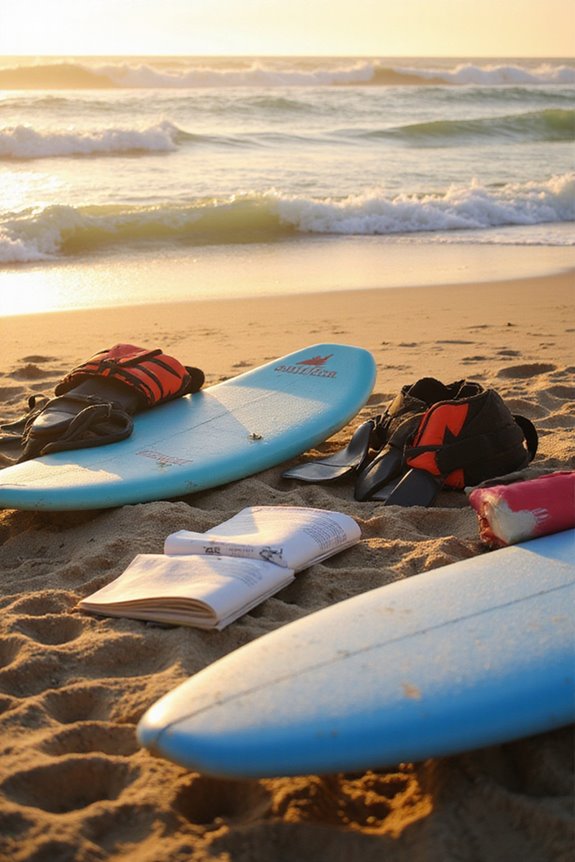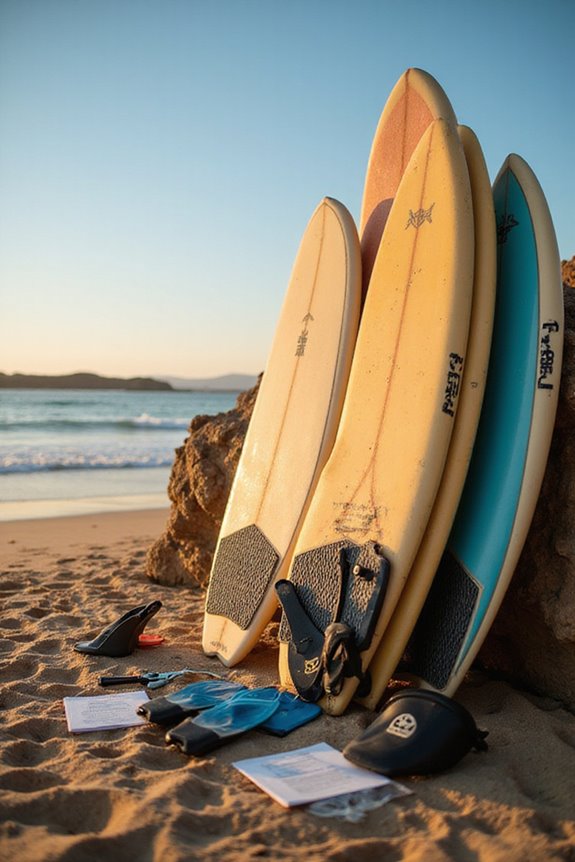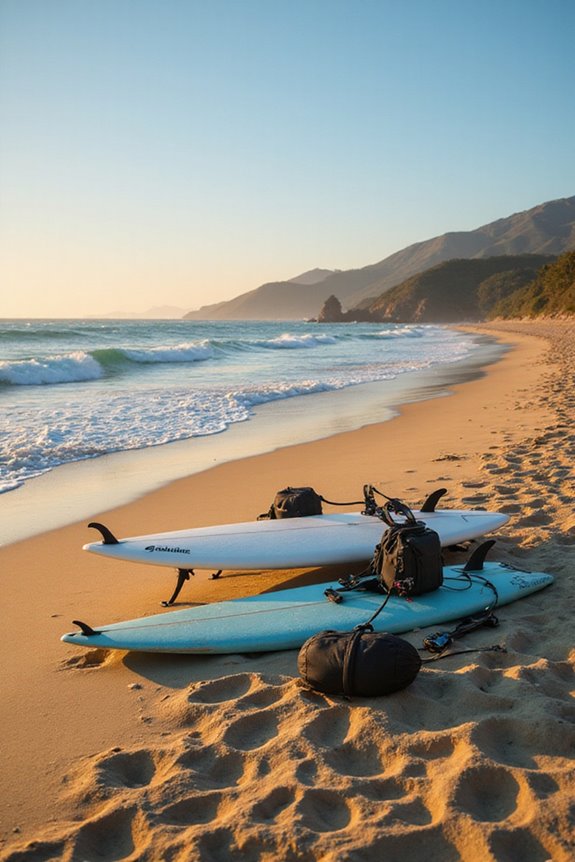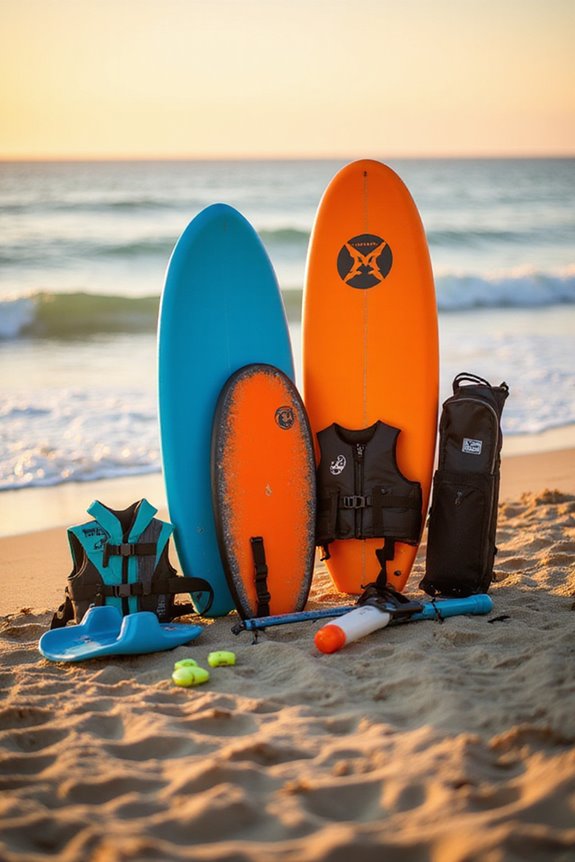Surf forecasts are always changing because of various factors. Model limitations lead to biases in predictions, while oceanic and atmospheric variability, including seasonal changes, affect wave conditions. Additionally, local coastal features and bathymetry, like underwater topography, influence how waves behave. These elements can shift wave heights and quality. By understanding these influences, we can better interpret surf forecasts. If you want to learn more about these factors and their impact, let’s explore further.
Key Takeaways
- Oceanic and atmospheric interactions constantly change wave height and direction, affecting surf conditions unpredictably.
- Seasonal variations and climate trends, such as El Niño and La Niña, significantly influence surf forecast variability.
- Local bathymetry impacts wave refraction and breaking patterns, leading to diverse surf conditions at different times.
- Model limitations and biases mean forecasts are adjusted regularly to improve accuracy based on real-time observations.
- Wind patterns evolve, causing continuous shifts in wave generation and ultimately affecting the surf conditions.
Understanding Model Limitations and Bias Correction
While numerical ocean wave and wind forecast models aim to provide accurate predictions, they often exhibit systematic biases compared to actual observed conditions. These numerical biases stem from model simplifications, limits in spatial resolution, and the imperfect representation of physical processes. To enhance accuracy, operational forecasters apply various correction methods, adjusting forecasts before public release. These methods include spatial and temporal corrections, utilizing real-time observations alongside model data. Additionally, understanding equipment compatibility and fit is essential for surfers to optimize their performance based on forecasted conditions.
The Difference Between Swell Height and Wave Height
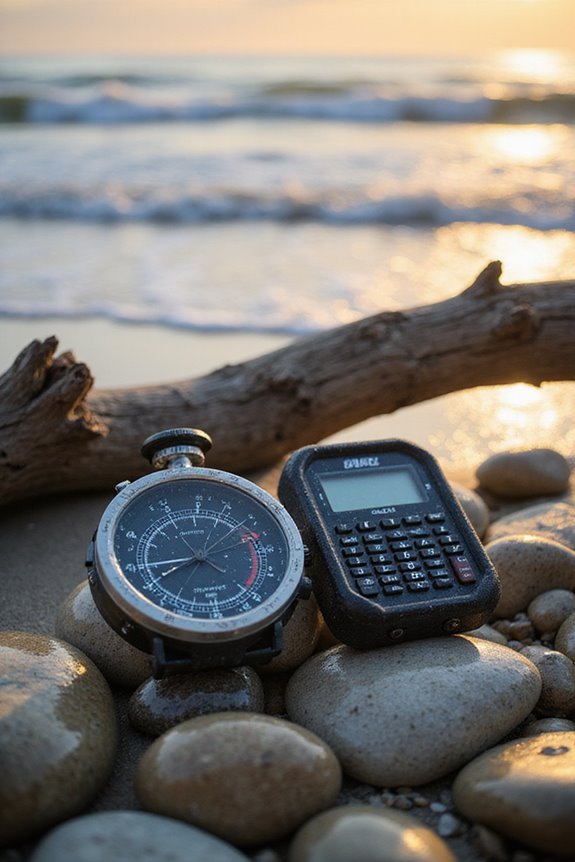
Understanding the nuances between swell height and wave height is essential for surfers and ocean enthusiasts alike. Swell height refers to the average vertical distance from peak to trough of waves traveling in deep water. It’s measured by buoys and reflects swell dynamics before interacting with the shoreline. In contrast, wave height is the size of breaking waves at the beach, measured from trough to crest.
Wave interaction with coastal features alters its height, often resulting in smaller waves than the swell height suggests. For example, groundswell typically leads to larger waves, while windswell may not deliver the expected size. Recognizing these differences helps us better interpret surf forecasts and understand what to expect when we hit the water. Additionally, understanding board dimensions and weight can significantly impact your surfing experience, as different boards are designed to perform optimally under varying wave conditions.
Impact of Wave Period on Surf Quality
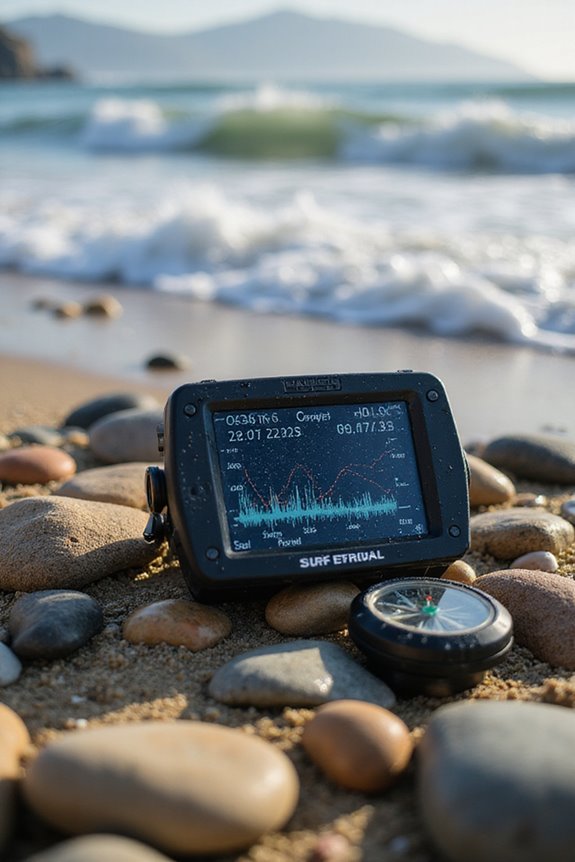
As we explore the impact of wave period on surf quality, it’s essential to recognize how this element influences the overall surfing experience. Wave period, measured in seconds, affects wave dynamics and swell classification. Longer wave periods typically indicate ground swells, which carry more energy, leading to larger and more powerful waves.
These waves create organized wave patterns that enhance surf conditions, offering better riding experiences. For instance, waves with periods above 10 seconds provide longer breaks, allowing surfers to recover between sets. In contrast, shorter period waves produce choppy surf, which can be challenging for many. Understanding wave period helps us make informed decisions about when and where to surf, ultimately improving our enjoyment on the water. Additionally, local surf culture plays a significant role in shaping surfers’ preferences and experiences at various beaches.
Oceanic and Atmospheric Variability
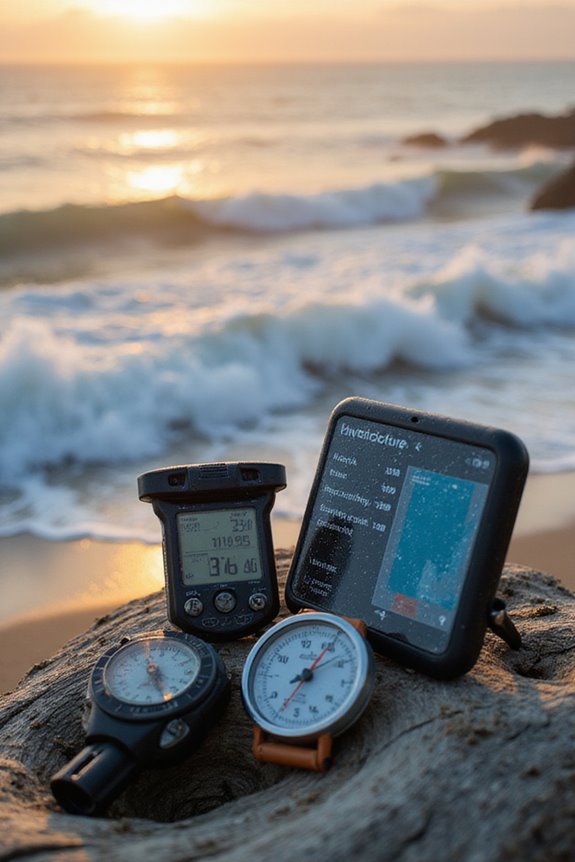
The interaction between oceanic and atmospheric systems greatly influences surf conditions, affecting everything from wave height to direction. Wind patterns play an essential role, as they generate waves by transferring energy to the ocean surface. Changes in atmospheric pressure can shift local wind regimes, impacting wave dynamics and ocean currents.
Seasonal changes and climate trends also contribute to surf forecast variability. For example, large-scale phenomena like El Niño and La Niña can alter regional wind and wave climates. These factors create fluctuations in wave height, direction, and period, making accurate long-term predictions challenging. By continuously analyzing data from satellites, buoys, and weather stations, we can better understand these complex interactions and improve forecasting efforts. Understanding the role of Quiksilver gear can also enhance a surfer’s experience when conditions vary.
Local Bathymetry and Coastal Influences
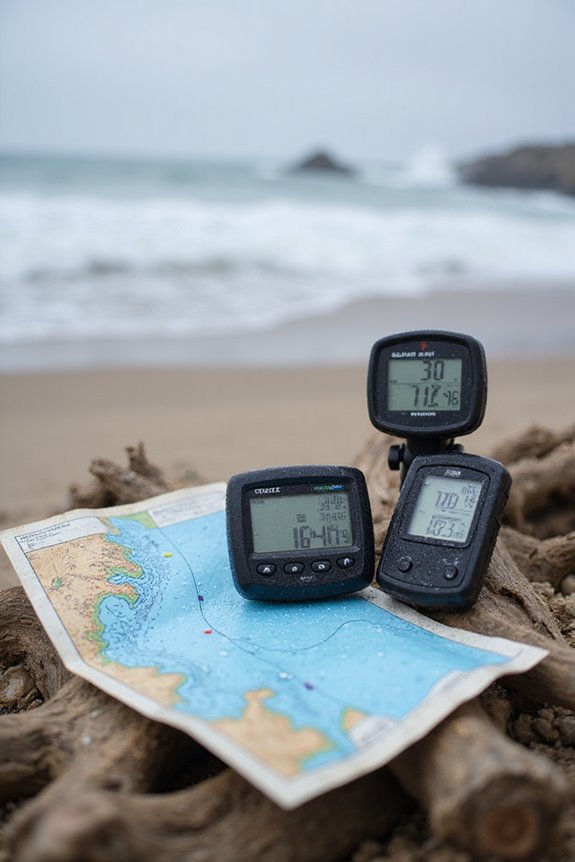
While we often focus on atmospheric conditions for surf forecasting, local bathymetry plays an equally essential role in shaping wave behavior. Bathymetric features, like underwater canyons and ridges, influence how waves refract as they approach the shore. This wave refraction concentrates energy in shallower areas, resulting in varying surf conditions even at nearby spots. Tidal influences further complicate this picture. Waves may break differently at low tide compared to high tide, affecting their size and quality. Understanding these factors helps us predict surf spot variability, ensuring we’re prepared for each session. By observing local conditions and learning how bathymetry interacts with tide, we can better anticipate the waves that await us. Additionally, monitoring wind conditions is crucial for identifying optimal surfing times and enhancing overall wave quality.
Frequency of Forecast Updates and Data Integration
Understanding the frequency of surf forecast updates is essential for surfers seeking the best conditions. Most surf forecast models update data at intervals ranging from every 3 hours to every 6 hours. These update intervals enable relatively frequent condition refreshes, enhancing forecast accuracy, particularly during dynamic weather conditions.
To generate predictions, surf forecasts integrate various data sources, including meteorological data (wind, pressure), oceanographic data (wave height, period, direction), and local topographic information. Organizations like the National Oceanic and Atmospheric Administration (NOAA) provide critical raw data, which proprietary algorithms use to predict local surfing conditions effectively. This integration of real-time buoy data and atmospheric models creates a more reliable and nuanced surf forecast, helping us plan our sessions better. Additionally, understanding trip cancellation protection can be crucial for surfers who may need to adjust their travel plans based on changing surf conditions.
The Role of Real-Time Weather Stations in Surf Forecasting
As we rely on real-time weather stations for surf forecasting, accurate and localized data becomes crucial for making informed decisions. These stations provide precise localized measurements of wind speed, direction, and sea surface temperatures. By offering real-time updates, they reduce uncertainty compared to broader regional data.
Weather station inputs enhance surf forecasting models, improving predictions for swell and wave quality. They also detect local microclimates and variations in coastal winds, which can greatly influence surf conditions.
Furthermore, timely data alerts surfers to hazardous conditions and allows for better planning around ideal surf times. With continuous calibration and advancements in technology, these weather stations play an essential role in ensuring safety and enhancing our surfing experiences.
Frequently Asked Questions
How Can I Interpret Surf Forecasts for My Local Beach?
To interpret surf forecasts for our local beach, we should consider local conditions like swell height, period, and wind. Combining these factors enhances forecast accuracy, ensuring we hit the waves when they’re at their best.
What Tools or Apps Provide the Best Surf Forecasts?
When seeking the best surfing apps, we should prioritize those with high forecast accuracy. Tools like Surfline and Magicseaweed offer reliable predictions, detailed reports, and real-time data to enhance our surfing experiences.
How Do Tides Specifically Affect Surf Conditions?
Riding the waves is like dancing with nature’s rhythm. We can see how tide patterns create a tidal influence, shaping surf conditions—high tides bring power, while low tides reveal hidden treasures and challenges for us surfers.
Why Do Forecasts Differ Between Various Surf Report Services?
Forecasts differ between surf report services due to varying forecast models and data sources. Each service interprets meteorological and oceanographic data differently, leading to discrepancies in wave height, swell period, and overall surf conditions.
What Should I Do if Conditions Don’t Match the Forecast?
When the surf forecast feels like a fickle tide, we should rely on our local knowledge. Let’s assess conditions firsthand, prioritize surfing safety, and adapt our plans as needed for the best experience.



